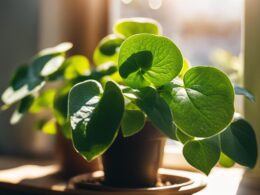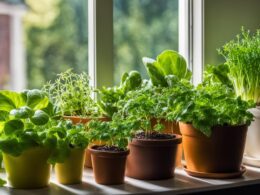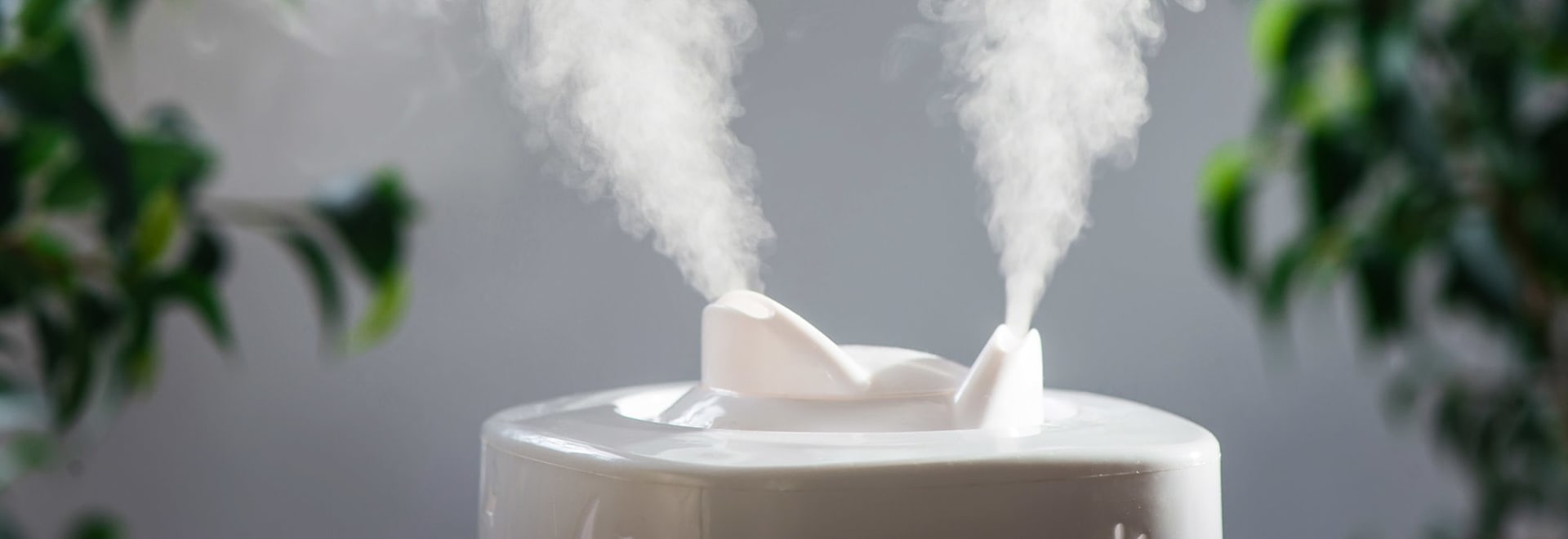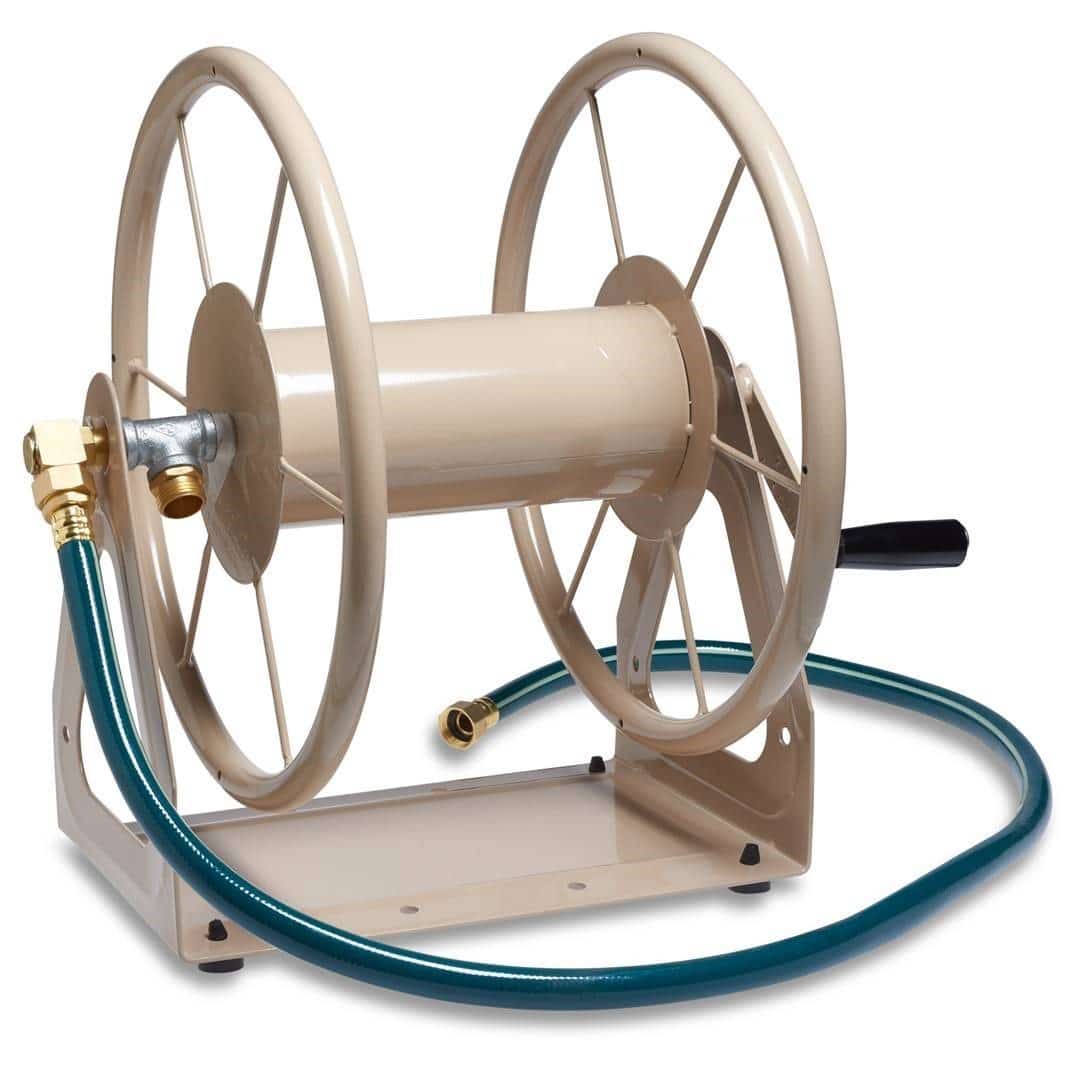Are you looking to give your garden the boost it needs? Triple 13 fertilizer is a great option that can help you achieve lush, healthy plants. In this article, we will guide you through the process of using triple 13 fertilizer effectively and safely.
Before getting started, it’s important to understand what triple 13 fertilizer is. It is a balanced fertilizer that contains three essential nutrients – nitrogen, phosphorus, and potassium, all in equal proportions. These nutrients are vital for plant growth and development, promoting strong roots, vibrant foliage, and bountiful blooms.
To begin, you’ll need to prepare your garden by removing any weeds and loosening the soil. Once your garden is ready, you can apply the triple 13 fertilizer evenly, following the recommended dosage instructions. Remember to wear gloves and protective clothing to ensure your safety.
After applying the fertilizer, it’s crucial to water your garden thoroughly. This helps the nutrients penetrate the soil and reach the plant roots effectively. Additionally, regular monitoring and adjusting of the fertilizer application will ensure optimal plant growth.
By following these steps and managing weeds, pests, and pruning as necessary, you can maximize the benefits of triple 13 fertilizer and enjoy a thriving garden.
Quick Summary
- Prepare the garden by removing weeds and loosening the soil before applying triple 13 fertilizer.
- Apply the fertilizer evenly across the garden or lawn following the recommended dosage instructions.
- Water the plants after applying the fertilizer to aid nutrient absorption.
- Regularly monitor plant growth and adjust fertilizer application as needed for optimal results.
Understanding Triple 13 Fertilizer
So, you’re curious about how to make the most of triple 13 fertilizer, huh? Well, you’ve come to the right place! Triple 13 fertilizer is a popular choice among gardeners because it contains three essential nutrients: nitrogen, phosphorus, and potassium. These nutrients are vital for plant growth and development.
When using triple 13 fertilizer, it’s important to understand how it works. The numbers 13-13-13 on the packaging indicate the percentage of each nutrient in the fertilizer. In this case, it means that the fertilizer contains 13% nitrogen, 13% phosphorus, and 13% potassium. These nutrients are crucial for healthy soil and plant growth.
To get the most out of triple 13 fertilizer, you need to ensure proper nutrient absorption. This means applying the fertilizer evenly across your garden or lawn and following the recommended dosage instructions. It’s also important to water your plants after applying the fertilizer to help the nutrients penetrate the soil.
Remember, safety is key when using any type of fertilizer. Always wear protective gloves and clothing when handling triple 13 fertilizer, and keep it out of the reach of children and pets. Additionally, make sure to store the fertilizer in a cool, dry place to maintain its effectiveness.
By following these guidelines, you can maximize the benefits of triple 13 fertilizer and help your plants thrive. Happy gardening!
Preparing Your Garden
To prepare your garden, start by clearing the area of any weeds, rocks, or debris. Use a shovel or rake to remove any unwanted plants or obstacles.
Next, focus on soil preparation by loosening it with a garden fork or tiller, and removing any large clumps or stones.
Finally, add organic matter such as compost or aged manure to enrich the soil and improve its fertility.
Clearing the Area
Before you start, make sure to clear the area to unleash the full potential of your plants with triple 13 fertilizer. Clearing techniques and proper site preparation are crucial to ensure the safety and success of your gardening project. By removing any debris, rocks, or weeds, you create a clean and fertile canvas for your plants to thrive. To help you get started, here is a table outlining the necessary steps for clearing the area:
| Clearing Techniques | Site Preparation |
|---|---|
| Remove weeds | Clear rocks |
| Trim overgrown plants | Level the ground |
| Dispose of debris | Loosen the soil |
| Clean up fallen leaves | Water the area |
Following these techniques will not only create a safer environment for gardening, but it will also provide a solid foundation for your triple 13 fertilizer to work its magic. Remember to prioritize safety and take necessary precautions while clearing the area.
Soil Preparation
Now that you’ve cleared the area and created a fertile canvas, it’s time to prepare the soil for optimal plant growth. Start by conducting a soil test to determine its nutrient deficiencies. This will help you understand which elements are lacking and how to address them effectively.
Once you have the results, take the necessary steps to amend the soil accordingly. Here are five important things to keep in mind during soil preparation:
- Ensure you wear protective gloves and a mask to avoid any contact with harmful substances.
- Use organic matter, such as compost or manure, to improve the soil’s structure and increase its nutrient content.
- Remove any rocks, weeds, or debris that may hinder plant growth.
- Consider adding lime if the soil pH is too acidic, or sulfur if it is too alkaline, to achieve the optimal pH level for your plants.
- Follow the instructions on the Triple 13 fertilizer packaging to apply the appropriate amount evenly across the soil.
By following these steps, you’ll create a safe and nutrient-rich environment for your plants to thrive.
Applying Triple 13 Fertilizer
To ensure the best results when applying triple 13 fertilizer, it’s important to follow correct application rates, timing, and frequency. You should carefully measure and apply the appropriate amount of fertilizer for your specific garden’s needs.
Timing is crucial, as applying the fertilizer at the right time will maximize its effectiveness. Additionally, maintaining a regular schedule for application will help provide consistent nutrition to your plants.
Correct Application Rates
For optimal results, it’s crucial to apply triple 13 fertilizer at the correct rates. Using the correct application techniques and measuring the right quantities of fertilizer are key to ensuring safety and success.
Start by carefully reading the instructions on the fertilizer packaging. This will provide you with the recommended application rates for your specific needs. Measure the fertilizer using a scale or scoop to ensure accuracy.
Spread the fertilizer evenly across the desired area, making sure to cover the entire surface. Avoid over-applying the fertilizer, as this can lead to nutrient imbalances and potential harm to plants.
Remember to always wear protective clothing and gloves when handling the fertilizer to protect yourself from any potential hazards.
By following these guidelines, you can achieve the best results while prioritizing safety.
Timing and Frequency of Application
Timing and frequency play a crucial role in achieving lush and vibrant plants when applying triple 13 fertilizer. To ensure the effectiveness of this fertilizer, it’s important to consider the timing of application.
The best time to apply triple 13 fertilizer is in the early spring, before the plants start to actively grow. This allows the nutrients to be readily available when the plants need them the most. Additionally, it’s recommended to apply the fertilizer every four to six weeks throughout the growing season. This consistent and regular application helps to maintain a steady supply of nutrients for the plants.
However, it’s essential to follow the instructions on the fertilizer packaging and avoid over-application, as this can lead to nutrient burn and harm the plants. By timing the application correctly and applying the fertilizer at the recommended frequency, you can ensure the safety and effectiveness of triple 13 fertilizer for your plants.
Watering Techniques
Make sure you water your plants deeply and evenly after applying triple 13 fertilizer to ensure proper nutrient absorption. When it comes to watering techniques, two effective methods are drip irrigation and deep watering. Drip irrigation involves supplying water directly to the roots of the plants through a network of pipes and emitters. This method ensures that water is delivered precisely where it’s needed, minimizing wastage and maximizing efficiency. Deep watering, on the other hand, involves applying water slowly and deeply to the soil, allowing it to penetrate down to the root zone. This encourages the plants to develop deep, strong root systems, making them more resilient to drought conditions.
To help you understand the benefits of these watering techniques, let’s take a look at the following table:
| Watering Technique | Benefits |
|---|---|
| Drip Irrigation | – Precise water delivery |
- Minimizes water loss through evaporation
- Reduces weed growth | | Deep Watering | – Encourages deep root growth
- Improves drought tolerance
- Prevents water runoff |
By using either drip irrigation or deep watering, you can ensure that your plants receive the necessary moisture to thrive while minimizing water waste. Remember to adjust your watering schedule based on the needs of your plants and the weather conditions. This will help maintain the health and safety of your plants, allowing them to fully utilize the nutrients provided by the triple 13 fertilizer.
Managing Weeds and Pests
When it comes to managing weeds and pests in your garden, there are a few key points to keep in mind.
First, you’ll want to explore different weed control methods such as mulching or hand-pulling.
Second, it’s important to take steps to prevent pests from infesting your plants, such as using natural deterrents or companion planting.
And finally, if you do encounter pests, you’ll want to have a plan in place for treatment, whether it’s using organic sprays or introducing beneficial insects.
Weed Control Methods
One effective way to keep pesky weeds at bay is by using triple 13 fertilizer, which helps create a lush and weed-free garden. When it comes to weed prevention, using organic weed control methods is important for those who prioritize safety.
Triple 13 fertilizer contains essential nutrients like nitrogen, phosphorus, and potassium, which not only promote healthy plant growth but also inhibit weed growth. To effectively control weeds, start by applying the fertilizer evenly across your garden beds, ensuring that you cover the entire area. This will provide the necessary nutrients for your plants while discouraging weed growth.
Additionally, regularly watering your garden will help activate the fertilizer and ensure that it reaches the roots of your plants, further enhancing their growth and preventing weeds from taking over. Remember to follow the instructions on the fertilizer package for best results and always wear gloves and protective clothing when handling any gardening products.
Pest Prevention and Treatment
To keep pesky pests from destroying your garden, you need to be proactive in preventing and treating them. Pest control is crucial for maintaining a healthy and thriving garden.
Instead of relying on harmful chemicals, consider using organic alternatives to keep your plants safe. One effective method is companion planting, where certain plants are grown together to deter pests naturally. For example, planting marigolds alongside your vegetables can repel aphids and nematodes.
Additionally, using natural predators like ladybugs and praying mantises can help control unwanted insects. Another organic option is neem oil, which is derived from the neem tree and acts as a natural insecticide.
By incorporating these organic pest control methods, you can protect your garden and ensure the safety of your plants.
What is the Recommended Amount of Liquid Fertilizer to Use per Plant?
The recommended liquid fertilizer quantity per plant varies depending on factors such as the plant type, stage of growth, and soil quality. Generally, it is advisable to follow the instructions provided on the fertilizer packaging, as they are specific to the brand and formulation. Over-fertilizing can harm plants, so it’s essential to use the correct amount to ensure healthy growth and avoid nutrient imbalances.
Pruning and Trimming
Pruning and trimming are essential tasks for maximizing the effectiveness of triple 13 fertilizer. When it comes to maintaining a healthy garden, it’s important to know the proper pruning techniques and use the right trimming tools.
By following these steps, you can ensure the safety of both yourself and your plants.
First and foremost, always wear protective gloves and goggles when pruning or trimming. This will protect your hands from cuts and your eyes from any debris that may fly up. Additionally, make sure your tools are sharp and clean. Dull tools can cause damage to the plants, while dirty tools can spread diseases.
When pruning, start by removing any dead or damaged branches. This will promote new growth and prevent the spread of diseases. Cut the branches at an angle, just above a bud or a side branch. Avoid cutting too close or too far, as this can hinder the plant’s growth.
Trimming, on the other hand, involves maintaining the shape and size of the plants. Use the appropriate trimming tools, such as hedge shears or pruning shears, depending on the thickness of the branches. Start by removing any overgrown or crossing branches. This will allow more sunlight and air circulation, ultimately promoting healthier growth.
Proper pruning and trimming techniques are crucial for maximizing the effectiveness of triple 13 fertilizer. By following these steps and using the right tools, you can ensure the safety of both yourself and your plants while promoting healthy growth.
Monitoring and Adjusting
When monitoring and adjusting your plants, it’s important to observe their response to the triple 13 fertilizer. Look for signs of growth, such as increased leaf size or vibrant colors.
If you notice any negative effects, such as wilting or yellowing leaves, it may be necessary to make adjustments to the fertilizer application. Keep a close eye on your plants and make any necessary changes to ensure their health and vitality.
Observing Plant Response
You’ll be amazed at how your plants respond to using triple 13 fertilizer! When using this fertilizer, it’s important to observe your plants closely to ensure they’re responding positively.
One key aspect to monitor is plant growth. Triple 13 fertilizer provides the necessary nutrients for healthy growth, so you should see an increase in the size and vigor of your plants.
Another important factor to consider is nutrient absorption. Triple 13 fertilizer is designed to be easily absorbed by plants, allowing them to access the essential nutrients they need for optimal health.
By observing your plants closely, you can ensure that they’re benefiting from the fertilizer and adjust the application if needed.
Remember, always follow the safety guidelines provided on the fertilizer packaging and wear appropriate protective gear when handling it.
Making Necessary Adjustments
To ensure optimal plant health, you may need to make adjustments based on your observations. Making the right adjustments can greatly optimize the results of using triple 13 fertilizer. Here are three important factors to consider when making adjustments:
| Factor | Observation | Adjustment |
|---|---|---|
| Soil Moisture | Check if the soil is too dry or too wet. | Adjust watering schedule accordingly. |
| Plant Growth | Observe if the plants are growing too slowly or too rapidly. | Adjust the amount of fertilizer applied. |
| Leaf Color | Pay attention to any discoloration or yellowing of leaves. | Adjust the pH level of the soil if necessary. |
By regularly monitoring these factors and making necessary adjustments, you can ensure that your plants receive the right amount of nutrients and thrive. Remember to always follow safety guidelines when handling and applying fertilizer to protect yourself and the environment.
Maximizing the Benefits of Triple 13 Fertilizer
In order to get the most out of triple 13 fertilizer, it’s essential to make sure you’re maximizing its benefits. By following a few simple steps, you can ensure that you are maximizing nutrient absorption and promoting long-term soil health.
First and foremost, it’s important to read and follow the instructions on the fertilizer package. Each fertilizer may have specific guidelines for application rates and timing. By adhering to these recommendations, you can avoid over or under fertilizing your plants, which can lead to nutrient imbalances and potential harm to your plants.
Additionally, it’s crucial to evenly distribute the fertilizer across your garden or lawn. This will help to ensure that all areas receive an adequate amount of nutrients. Uneven distribution can result in patchy growth and nutrient deficiencies in certain areas.
To further maximize the benefits of triple 13 fertilizer, consider incorporating organic matter into your soil. This can help to improve soil structure, increase water retention, and enhance nutrient availability. Organic matter can be added in the form of compost, manure, or other natural amendments.
Lastly, make sure to water your plants properly after applying the fertilizer. This will help to activate the nutrients and encourage their uptake by the plants. It’s important to water deeply and evenly to avoid nutrient runoff and to ensure that the fertilizer reaches the root zone.
By following these tips, you can make the most of triple 13 fertilizer, promoting maximum nutrient absorption and long-term soil health. Remember to always prioritize safety and follow the instructions provided.
Frequently Asked Questions
Can Triple 13 fertilizer be used on all types of plants, or are there some plants that it should not be applied to?
Triple 13 fertilizer is suitable for most plants, but there are some exceptions. It’s important to research specific plant requirements before applying. If in doubt, consider alternative options like organic fertilizers to ensure the safety of your plants.
Is Triple 13 fertilizer safe for pets and children to be around?
Triple 13 fertilizer may pose potential health risks to pets and children. To ensure their safety, take precautions like keeping them away from the fertilizer, storing it in a secure place, and washing hands and paws after handling it.
How long does it take for Triple 13 fertilizer to start showing results in the plants?
Triple 13 fertilizer typically starts showing results in plants within a few weeks. Its benefits include promoting healthy growth, improving root development, and enhancing overall plant vigor. To ensure safety, avoid over-applying the fertilizer and keep pets and children away from treated areas.
Can Triple 13 fertilizer be used in conjunction with other fertilizers or chemicals?
Yes, triple 13 fertilizer can be used with organic fertilizers for better results. However, it’s important to avoid combining it with pesticides as it may have potential negative effects on the plants and the environment.
How often should Triple 13 fertilizer be applied to the garden throughout the growing season?
To ensure the safety of your pets and children, it is recommended to apply triple 13 fertilizer to the garden throughout the growing season at regular intervals.
Conclusion
In conclusion, using triple 13 fertilizer can greatly enhance the health and productivity of your garden. By understanding how to properly prepare and apply the fertilizer, as well as implementing effective watering techniques and managing weeds and pests, you can maximize its benefits.
Don’t forget to regularly prune and trim your plants, and monitor and adjust the fertilizer as needed. With these steps, you’ll be well on your way to a thriving and beautiful garden.
So go ahead and give triple 13 fertilizer a try!








